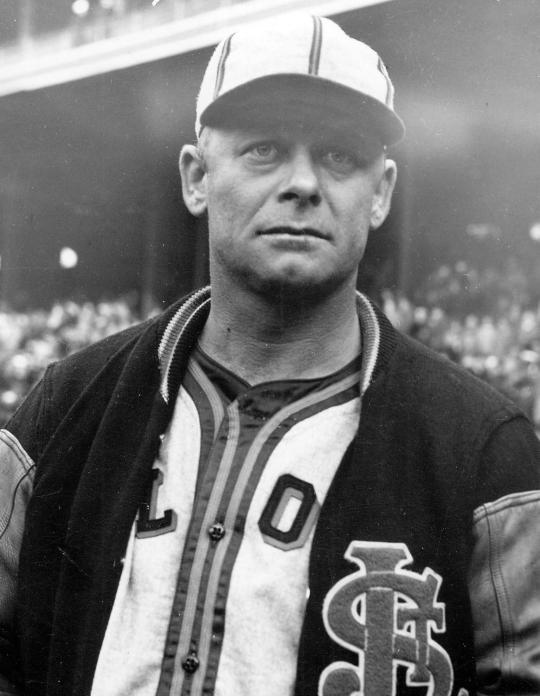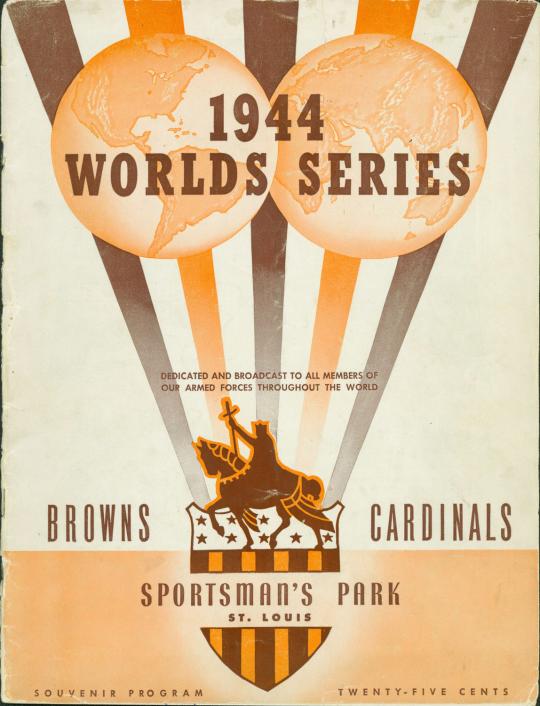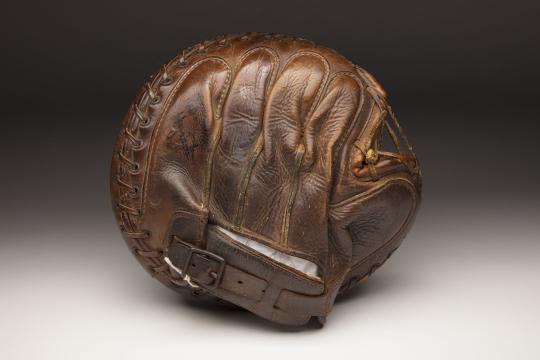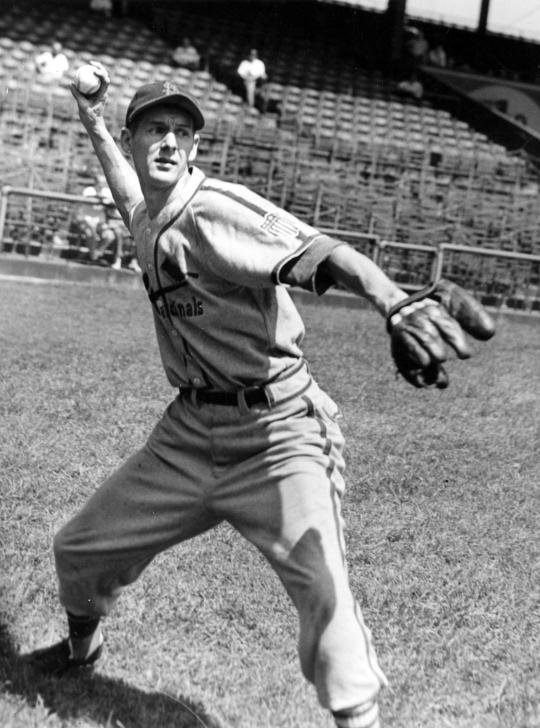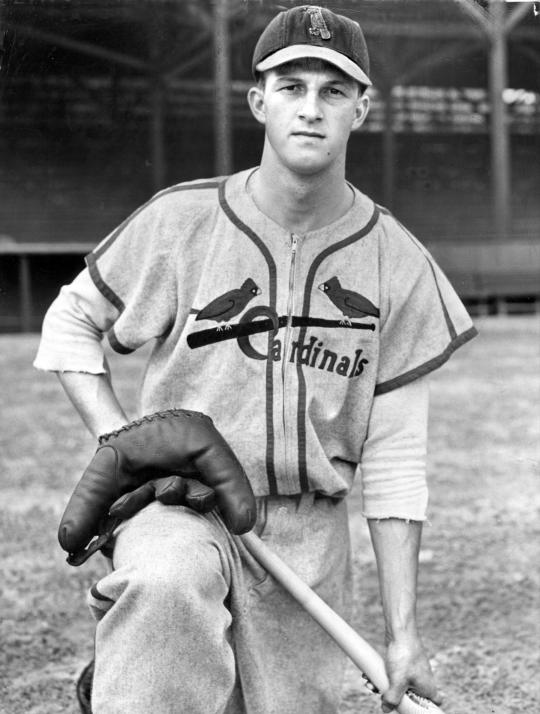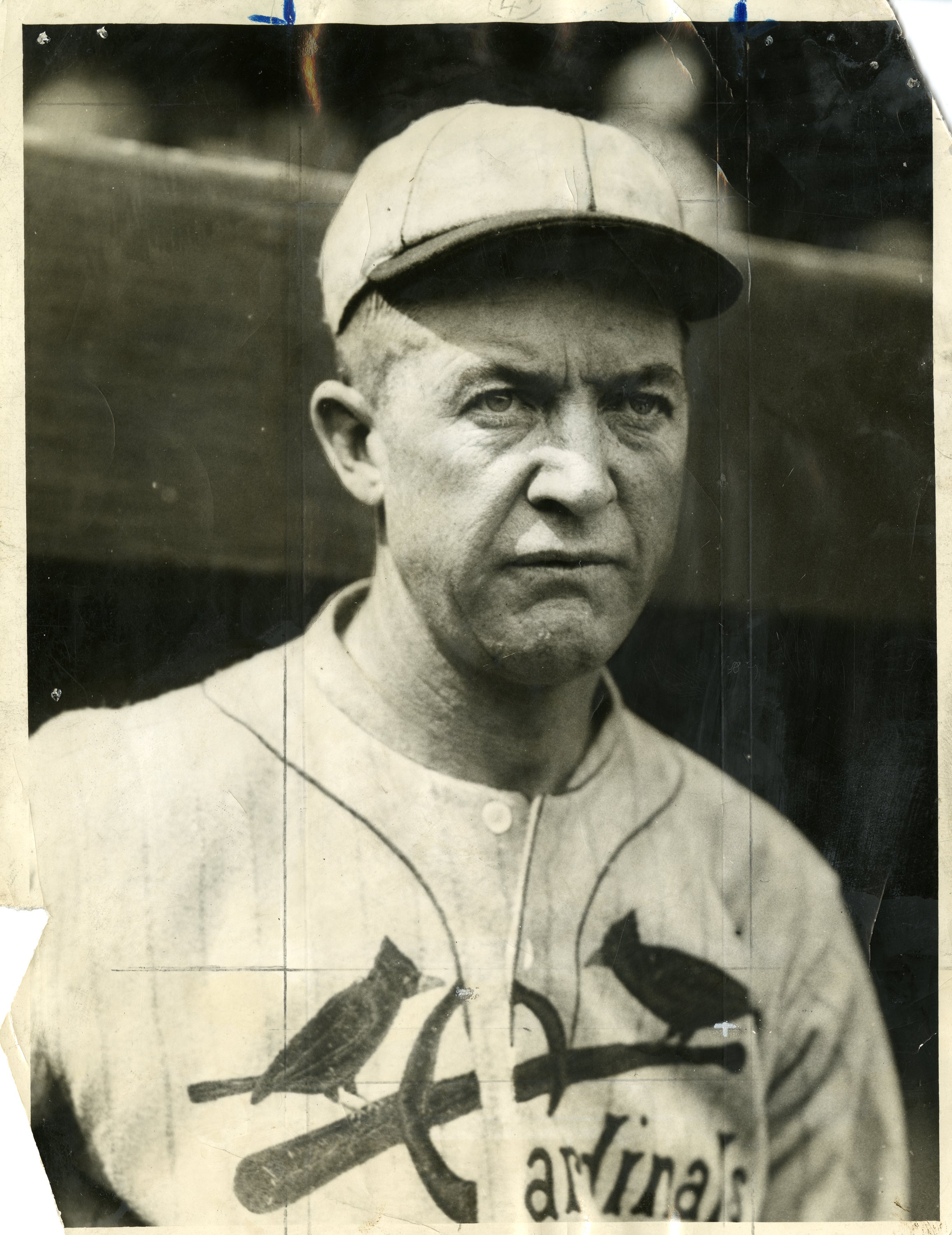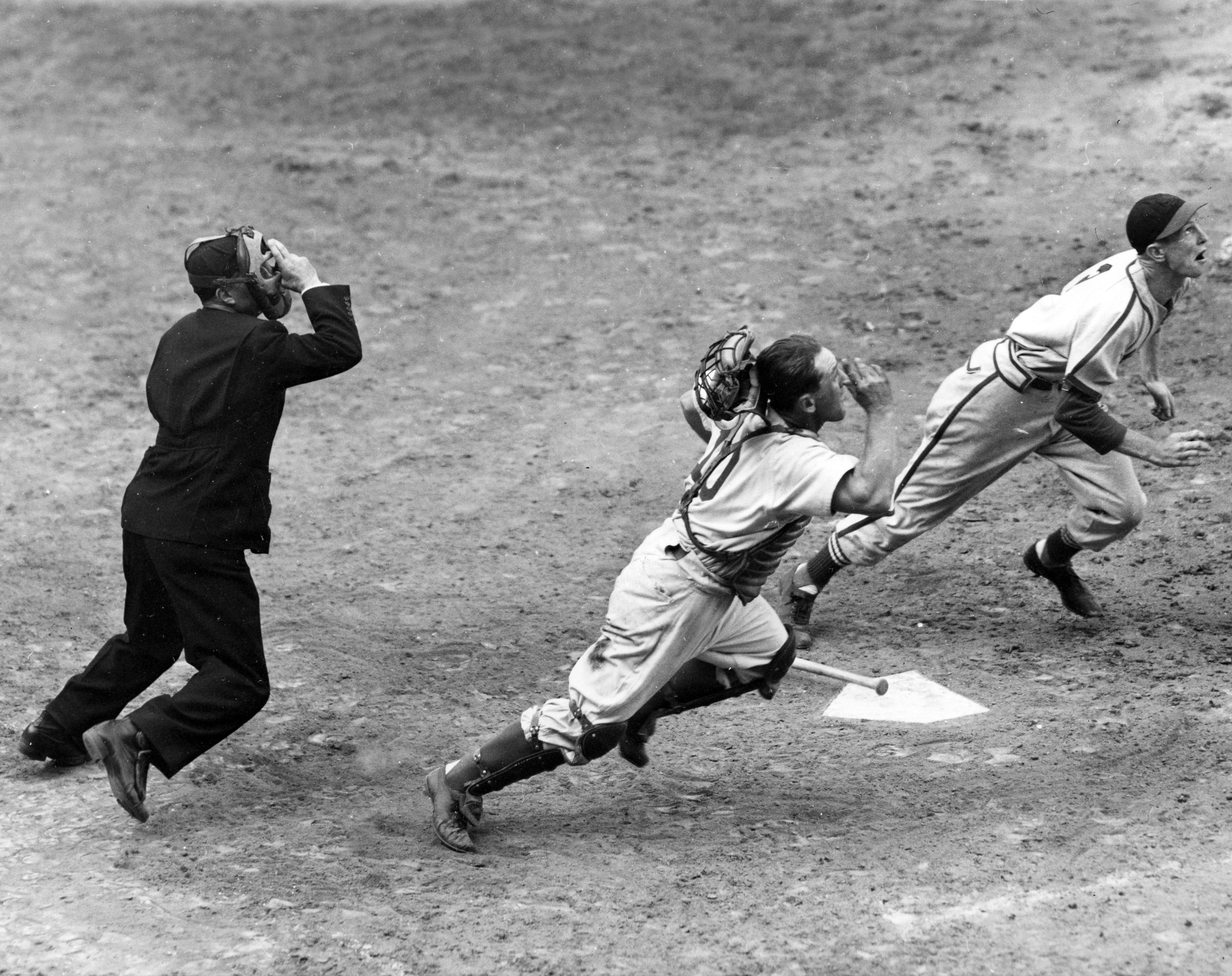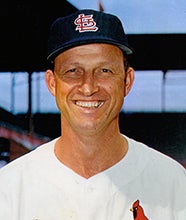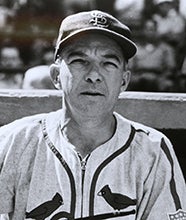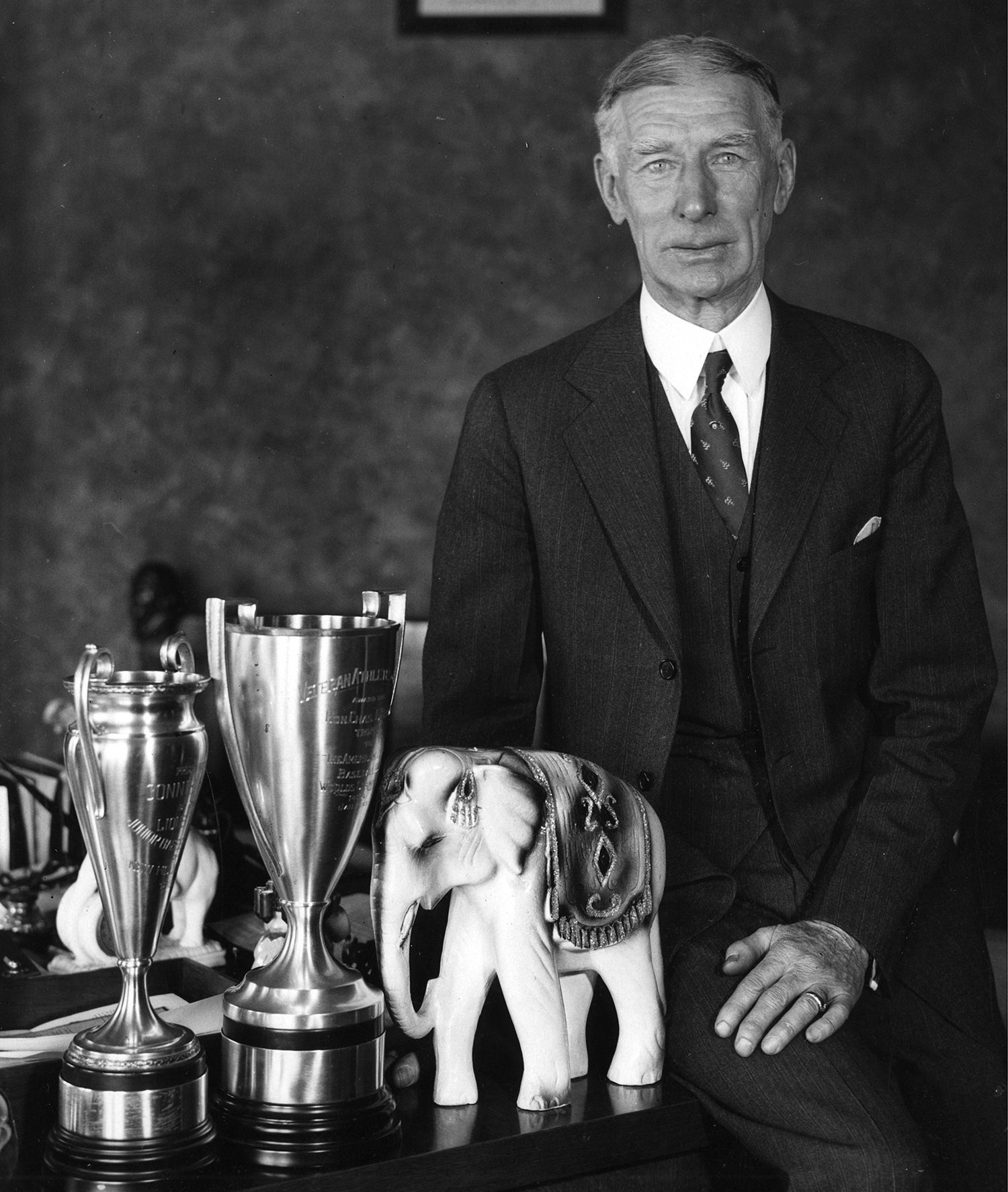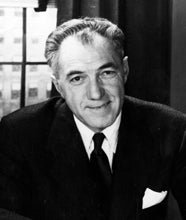- Home
- Our Stories
- All-St. Louis World Series brought out the best in Cardinals, Browns
All-St. Louis World Series brought out the best in Cardinals, Browns
With a war raging overseas and uncertainty overwhelming the nation, a unique World Series was taking place pitting two teams who shared the same home ballpark.
The 1944 World Series, considered a David versus Goliath matchup at the time, was an all-St. Louis affair featuring the prodigious Cardinals, a franchise having just won its third consecutive National League pennant, and the plucky Browns, the winners of its first American League pennant in its 43rd year of existence.
Official Hall of Fame Apparel
Proceeds from online store purchases help support our mission to preserve baseball history. Thank you!
Hall of Fame Membership
There is no simpler, and more essential, way to demonstrate your support than to sign on as a Museum Member.
The Cinderella story Browns, who had only one winning campaign in the previous 14 seasons, finishing with an 82-69 record in 1942. In the end, Goliath won the ’44 World Series in six games.
All the 1944 World Series games were played at Sportsman’s Park – the ballpark owned by the Browns, who hosted the Cardinals a tenant. The seventh one-city World Series at the time, it was the third to be staged in one ballpark after the Giants and Yankees played at the Polo Grounds in New York in 1921 and ’22.
With the end of World War II still a year away, the roster of both teams were somewhat diminished by players serving in the military. The 1944 Redbirds were led by shortstop and NL MVP Marty Marion, 23-year-old outfielder and future Hall of Famer Stan Musial and 22-game winner Mort Cooper. The Browns had shortstop Vern Stephens, who led the club with 109 RBI, outfielder Mike Kreevich, the only regular to hit over .300 and 19-game winner Nels Potter.
And in a story that was typical of wartime baseball, 35-year-old righty Sig Jakucki, who hadn’t played affiliated ball since 1938, won 13 games for the Browns, which included the pennant-winner on the final day of the season.
“A player who had been with us, and was working in the Galveston shipyards, sent me word that a pitcher named Jakucki down there was showing enough stuff to warrant the belief he could win in the American League,” said Browns general manager Bill DeWitt in a midseason interview.
“I wrote for more dope on the pitcher. My correspondent insisted Jakucki could win in the American League, not only this year, but in the circuit as it was before the war. I finally sent for Jakucki. Look at him now – the man who will win the pennant for us, the greatest bargain in the history of the major leagues.”
The Cardinals, who defeated the Yankees in the 1942 World Series only to fall to them in the ‘43 Fall Classic, overwhelmed the competition in 1944, finishing with a 105-49 record, 14-and-a-half games ahead of the runner-up Pirates. The Browns, who would leave for Baltimore after the 1953 season, finished ’44 with an 89-65 mark, finishing one game ahead of the Tigers.
With no travel days needed, the 1944 Fall Classic was played over six consecutive day games from Oct. 4-9.
In what proved to be a Fall Classic dominated by pitching, with each team finishing the six games with an ERA below 2.00, the Browns took the opening contest, 2-1, behind George McQuinn’s two-run homer and the complete game pitching effort of Denny Galehouse. The Cards won Game 2, 3-2, in 11 innings, with Ken O’Dea coming through with the walk-off single.
After the Browns took the third contest, 6-2, led by McQuinn’s three hits and two RBI and Jack Kramer’s complete game, the Cards won the final three games to capture the World Series crown. Harry Brecheen went the distance in Game 4’s 5-1 win, Mort Cooper tossed a 2-0 shutout in the penultimate contest, and Max Lanier and Ted Wilks combined for a three-hitter in the 3-1 victory that brought the Redbirds their fifth World Series championship since 1926.
“We beat a hell of a ball club,” said an excited Cards manager Billy Southworth, elected to the National Baseball Hall of Fame in 2008, in the clubhouse after Game 6.
The opposing skipper, a disappointed Luke Sewell, later shared his unique perspective: “The Cards got the breaks and they won. That tells the whole story. We’ve still got a better ball club. We didn’t hit the ball, but the boys hustled and that’s all I could ask of them.”
While McQuinn was the leading hitter in the World Series, topping all players with a .438 average and five RBI, many observers thought Marion was the Fall Classic’s best player.
Though he collected five hits and batted only .227, defensively he accepted his 29 chances flawlessly.
“The best ballplayer in the series was Marty Marion,” said NL President Ford Frick. “He showed us some shortstopping we’ve rarely seen before and won’t see many times again. He killed off at least four big Brown rallies. They found it just about impossible to hit one past him.”
Hall of Fame manager Connie Mack agreed: “I’ve looked at a lot of shortstops in my day, but that fellow is the best I’ve ever seen.”
In a column the next day for The New York Times, Arthur Daley wrote: “The bubble burst today for the Brownies. Their admirable fight of the past three weeks was at an end, and it was a forlorn, bedraggled-looking ball club which lost out to the Cardinals in the final game of the World Series.
“The Redbirds today were the masterful aristocrats they were all season. They hit well, fielded well and received excellent pitching. The Brownies were only the poor relations, the Ozark backwoodsmen who just didn’t belong on the same field with them. This was the kind of game everyone had been anticipating from the start. Class will tell in the end.
“Yet it hurt, in a way, to see the Brownies go down so ignominiously.”
In a World Series that might have led to civil strife for inhabitants of the Gateway to the West, none materialized, as explained by an October 1944 editorial in The Sporting News.
“The Series was entirely a family affair. This was not alone due to the circumstance that all the games were played in one city, but to the fact that St. Louis is not a town divided within itself. It is different in that respect from other cities that have had the Series exclusively. Chicago has its North Side, where the Cubs rule supreme, and its South Side, where the White Sox are the favorites, and there is internecine warfare when they meet. In New York, the Yankees are the pride of the Bronx, the Giants of Manhattan and the Dodgers of Brooklyn. Nothing good ever came out of the other sections, according to the inhabitants of one of the three, creating a natural rivalry that extends to the diamond.
“In St. Louis, however, everybody goes to Sportsman’s Park to see the teams play. They root for the Cardinals and for the Browns, more or less impartially, according to which is at home. One woman, who had been a consistent Cardinal supporter, probably expressed the general sentiment when returning from the first World’s Series game, she said: ‘Somehow, I just can’t root against those Browns.’”
Included among the artifacts from the 1944 World Series in the permanent collection of the National Baseball Hall of Fame and Museum are a Cardinals World Series ring, a pair of ticket stubs from Game 5, a Browns World Series autographed baseball, a World Series baseball autographed by Cardinals outfielder Danny Litwhiler, and a catcher’s mitt used by Cardinals backstop Myron “Red” Hayworth in the World Series.
Hayworth, who donated the mitt in 1995, passed away at the age of 90 in 2006.
Bill Francis is the senior research and writing specialist at the National Baseball Hall of Fame and Museum

